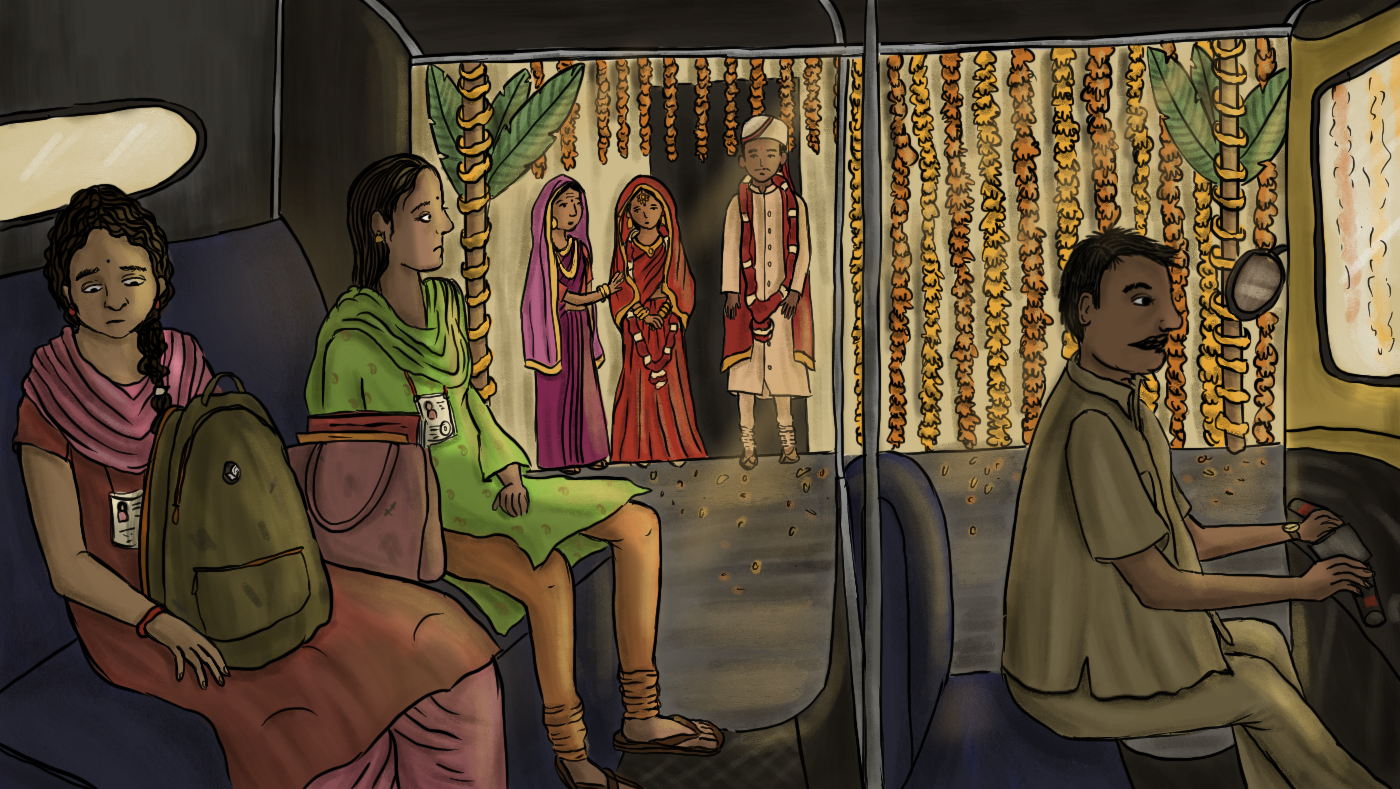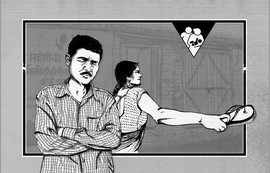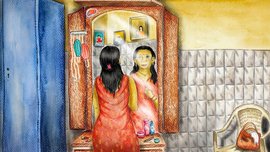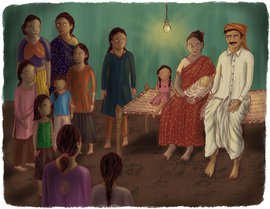She is just 19, but Shivani Kumari feels her time is running out.
She has already managed to keep her family from arranging her marriage for four years now – a luxury she believes she won’t be able to enjoy for too long. “I don’t know for how long I can stop them,” she says. “It has to end someday.”
In Gangsara, her village in Bihar’s Samastipur district, girls are usually married before they even complete Class 10 in school, or by the time they are around 17-18.
Shivani ( all names in this story have been changed ) has managed to hold out, and is in the second year of a BCom degree course. Going to college is something that she always wanted to do, but she didn’t imagine it would be so lonely. “All my friends in the village are married. All the girls I grew up with and went to school with have left,” she says, speaking one afternoon in a neighbour’s house because she couldn’t talk openly in her own home. Even here, she insisted on talking in the backyard, where the family goats rested. “During corona, my last friend in the college also got married,” she adds.
In her community, she says, girls rarely get a chance to go to college. Shivani belongs to the Ravidas community (a sub-group of the Chamar caste), a Mahadalit – a collective term given in 2007 by the Bihar government to 21 severely disadvantaged Scheduled Caste communities.
Her loneliness is compounded by the social stigma of being unmarried and the constant pressure from family members, neighbours and acquaintances. “My father says I’ve studied enough. But I want to become a police officer. He doesn’t think I should be so ambitious. He says if I keep studying, who will marry me?” she says. “Even the boys in our community get married early. Sometimes I wonder if I should give up, but I’ve come this far and want to achieve my dream.”
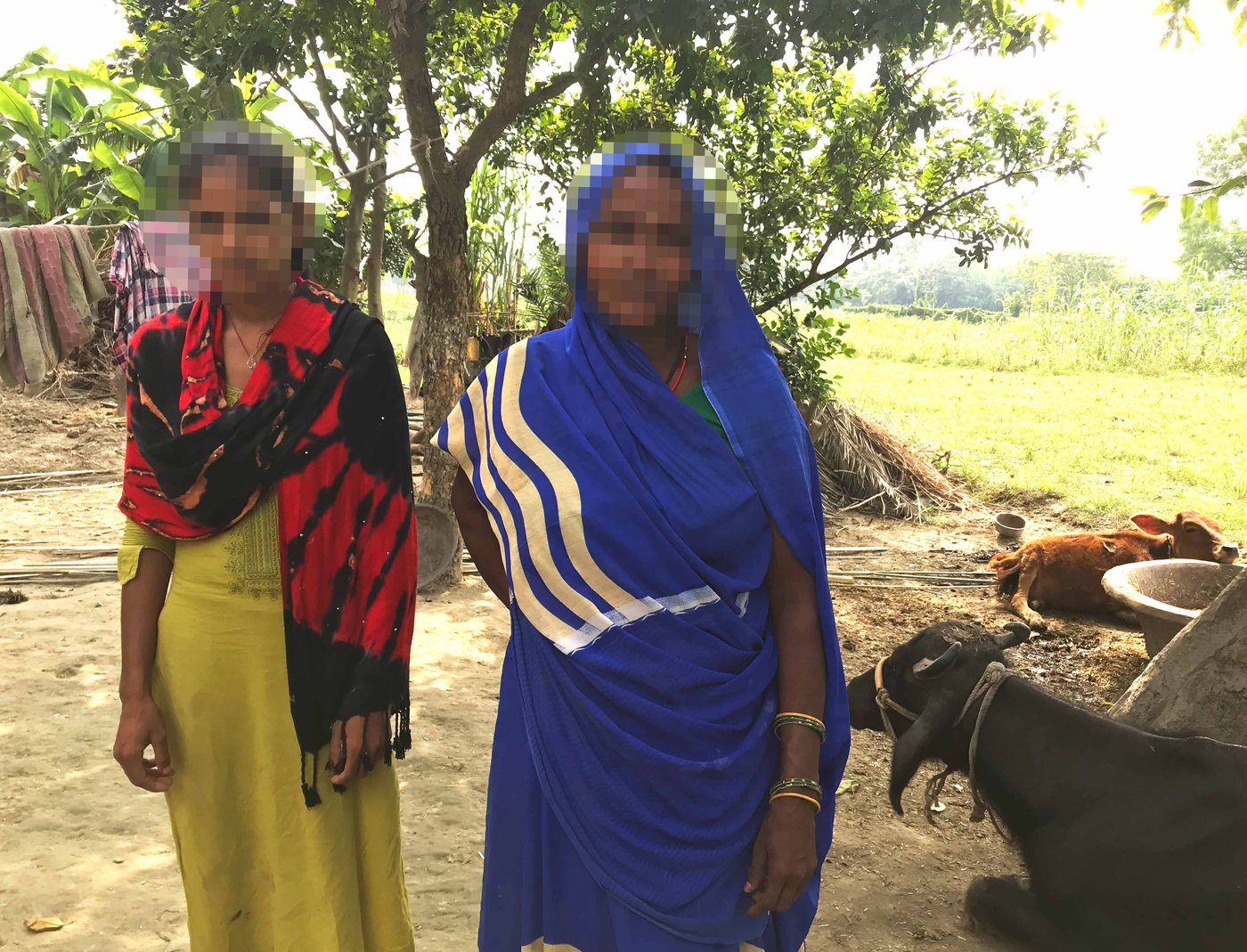
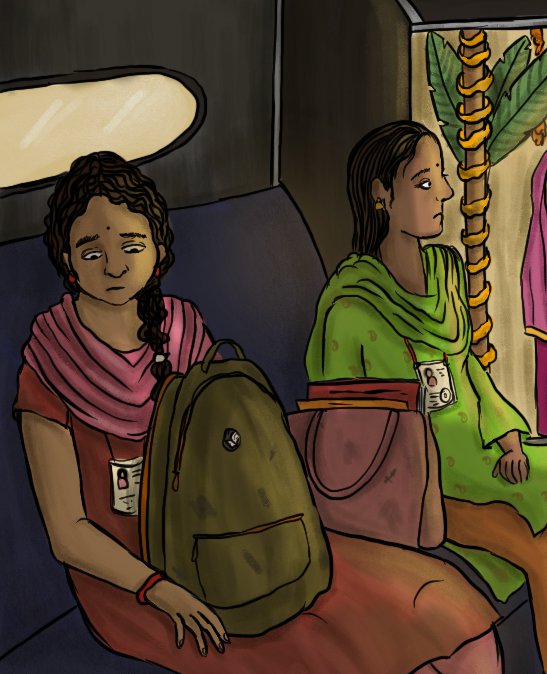
Shivani Kumari (left, with her mother, Meena Devi), says: 'Sometimes I wonder if I should give up...'
The KSR College in Samastipur, which Shivani attends, is roughly seven kilometres from her village. She has to walk, then take a bus, and finally a shared autorickshaw for the last stretch. Sometimes, boys from her college offer to take her there on their motorcycles, but she always refuses, afraid of the repercussions of being seen with a guy. “People in the village are ruthless with rumours. My best friend was married off when she was seen with a boy from school. I don’t want that coming in the way of my college degree and becoming a policewoman,” she says.
Shivani’s parents are farm labourers, who together earn around 10,000 rupees a month. Her mother, 42-year-old Meena Devi, is worried about her five children – two sons, aged 13 and 17, and three daughters, aged 10, 15 and 19-year-old Shivani. ‘I worry about my children all day. I have to arrange for dowries for my daughters,” Meena Devi says. She hopes to build a bigger house too – their brick house with an asbestos roof has only one bedroom and the family shares a toilet with three neighbouring families. “I have to make sure the girls [daughters-in-law] who come into my house are comfortable and that they're happy here too,” she adds. Amid these concerns, education would have been a low priority had it not been for Shivani’s determination to go to college.
Meena Devi, who herself never went to school, is the only family member who has been supportive of Shivani’s plans. “She sees other policewomen and wants to become like them. How can I stop her?” she asks. “As a mother I would be very proud [if she becomes a cop]. But everyone taunts her, and I feel bad about that.”
For some girls and women in the village, it doesn’t stop at taunts.
In 17-year-old Neha Kumari’s family, resistance to marriage brings about a beating. “My father gets angry and beats my mother every time a new marriage proposal is presented and I say no. I know I’m asking for a lot from my mother,” she says, speaking in a small room she shares with her siblings, away from the living room where her father rests that afternoon. In the room, one corner is reserved as Neha’s studying space and nobody is allowed to touch her textbooks, she says, smiling.
Her mother Naina Devi says the beatings are a small price to pay. She has even considered selling her jewellery for Neha’s college education. “If she doesn’t study and is forced to get married, she says she will eat poison and die. How can I see that happening?” she asks. Naina Devi, 39, is the only earning member in the family after her husband lost his leg in an accident in 2017 and stopped working as a farm labourer. The family belongs to the Bhuiya community, also a Mahadalit caste. Naina’s income of roughly Rs. 5,000 a month as a farm labourer is not enough to run the household, she says, and they get by with some help from relatives.
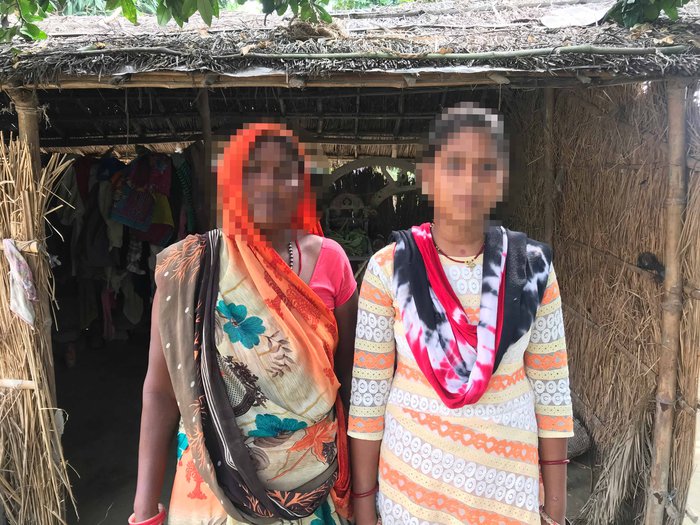
In Neha Kumari and Naina Devi's family, resistance to marriage brings a beating
Naina Devi says the beatings are a small price to pay. She has even considered selling her jewellery for Neha’s college education. 'If she doesn’t study and is forced to get married, she says she will eat poison and die. How can I see that happening?' she asks
Neha studies in Class 12, and dreams of working in an office in Patna. “Nobody from my family has worked in an office – I want to be the first one to do so,” she says. Her older sister got married at the age of 17 and by 22 has three kids. Her brothers are 19 and 15 years old. “I love my sister, but I don’t want her life,” Neha adds.
The government school where Neha studies in Gangsara – the village in Sarairanjan tehsil has a population of 6,868 people (Census 2011) – runs till Class 12. She says only six girls and 12 boys are enrolled in her class. “After Class 8, the number of girls in the school slowly starts coming down,” says Anil Kumar, a teacher in Neha's school. “Sometimes it's because they're sent away to work, sometimes they get married."
In Bihar, 42.5 per cent of girls are married before the age of 18 – that is, before the legal age of marriage in the country (as mandated by the Prohibition of Child Marriage Act 2006). This number is much higher than the all-India level of 26.8per cent, notes the National Family Health Survey ( NFHS-4, 2015-16 ). In Samastipur, the figure climbs even further to 52.3 per cent .
The repercussions are many, in addition to impacting the education of girls like Neha and Shivani. “Even though we can see that fertility has dropped in Bihar over the years [from 4 in 2005-06 to 3.4 in 2015-16 to 3 in NFHS 2019-20], we know that girls who are married at an early age are more likely to be poorer and undernourished, and are excluded from health services,” say Purnima Menon, a senior research fellow at the International Food Policy Research Institute in New Delhi, who has studied the linkages between education, early marriage and health of women and girls.
Giving transitions adequate time is crucial, Menon adds – intervals between school and marriage, between pregnancies. “We have to extend the spaces between major life transformations in girls’ lives,” she says. “And we need to start when girls are girls.” Menon believes support such as cash transfer programmes and family planning incentives can contribute to creating the necessary delays and help girls to achieve their goals.
“We believe that if girls’ marriage is delayed, they can study better as well as lead healthier lives,” says Kiran Kumari, a programme manager at Jawahar Jyoti Bal Vikas Kendra, an NGO working in Samastipur’s Sarairanjan tehsil . Kumari has been involved in stopping many early marriages as well as convincing family members to delay the marriage if the girl wishes to do so. “Our work doesn’t end with stopping attempts at early marriage,” she adds. “The goal is to keep the girls motivated enough to study and lead a life that they choose for themselves.”
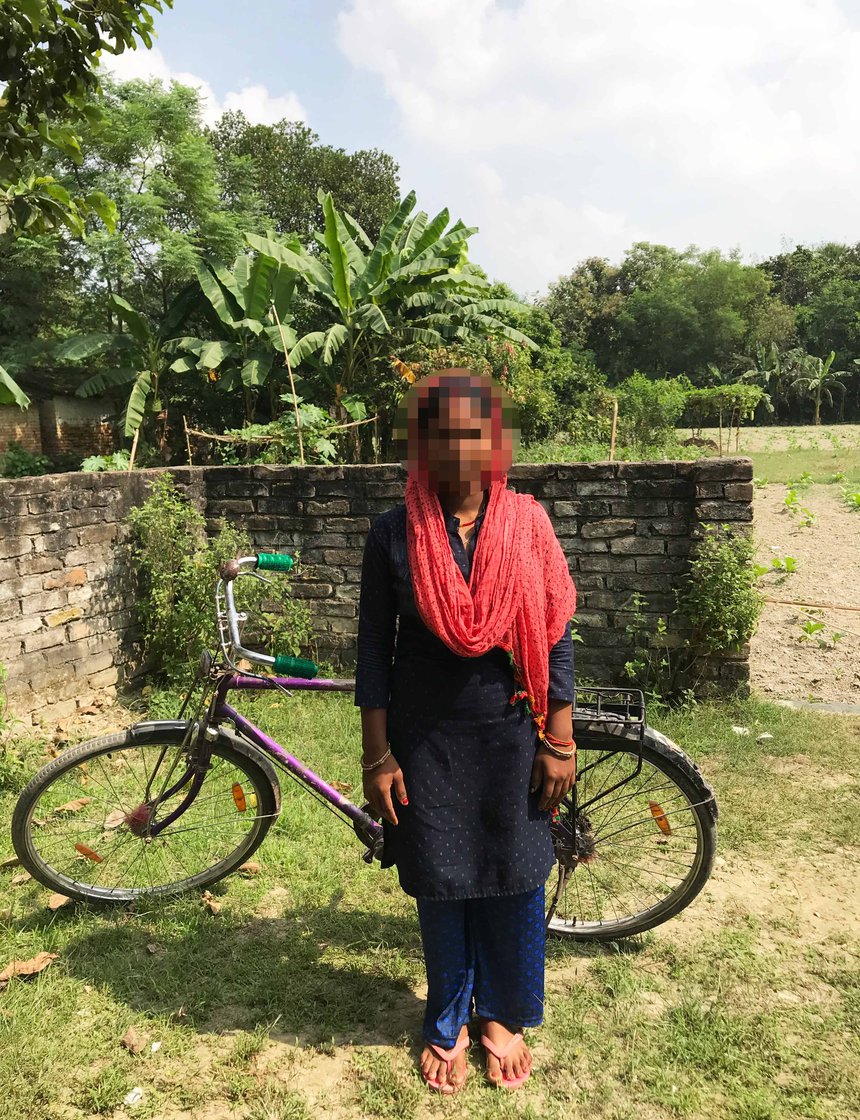
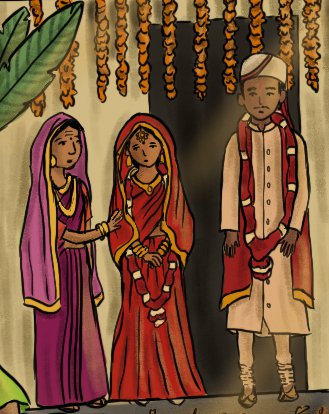
Every time, Gauri had succeeded in convincing her parents to wait. But in May 2020, she wasn’t so lucky
But since the beginning of the pandemic-lockdown in March 2020, it has become harder to convince parents, Kiran observes. “Parents tell us: ‘we are losing incomes [and are not sure of future earnings], we want to finish off one responsibility at least by getting the girls married’. We try to convince them and say the girls are not a burden, they will help you.”
For a while, 16-year-old Gauri Kumari managed to buy time for herself. She is the eldest sister of seven siblings, their ages ranging from 9 to 24 – the family is also from the Bhuiya caste – and her parents had tried to get her married several times. Every time, she had succeeded in convincing them to wait. But in May 2020, she wasn’t so lucky.
Speaking one morning at a crowded market near a bus-stand outside her village, Mahuli Damodar in Samastipur, Gauri recalled the events that led to her wedding: “At first my mother wanted me to get married to an illiterate guy in Begusarai, but I wanted to marry an educated person like me,” she says. “It was only after I threatened suicide and called the sirs and madams from Jawahar Jyoti that she gave up on that idea.”
But Gauri’s refusal and threats to call the police didn’t work for too long. In May last year, her family found a boy who is in college and Gauri was married with only a few people in attendance. Even her father, who works as a daily wage labourer at wholesale markets in Mumbai, couldn’t attend the wedding because of the lockdown.
“I regret being in this position. I really thought I would study and become someone important. But even now, I don’t want to give up. I will become a teacher one day,” she says, “so that I can teach young girls that their future is in their own hands.”
PARI and CounterMedia Trust's nationwide reporting project on adolescent girls and young women in rural India is part of a Population Foundation of India-supported initiative to explore the situation of these vital yet marginalised groups, through the voices and lived experience of ordinary people.
Want to republish this article? Please write to [email protected] with a cc to [email protected]
